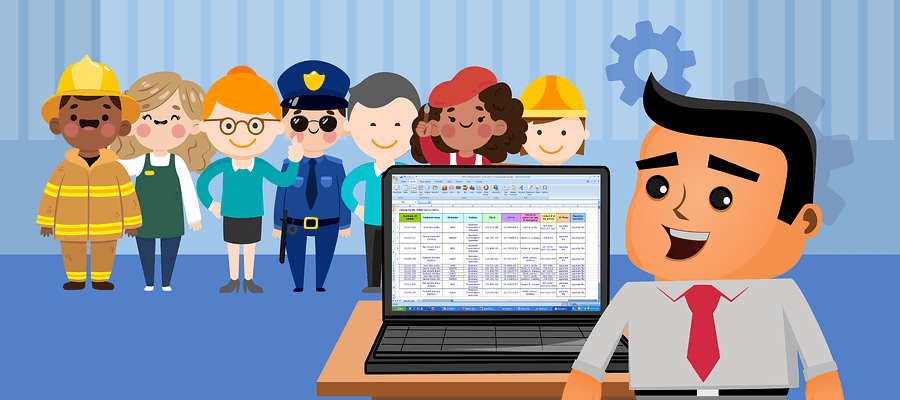It has become conventional for analysts and experts in many fields to observe that data is to today what oil was to the 20th century. Data will undoubtedly continue to fuel growth and change in the future, but marketing researchers know that having quality data is vital. Their industry thrives on qualitative data, but collecting this can be energy intensive. Furthermore, marketing researchers recognize that their data is only valuable if it can confirm or disprove their suspicions or unlock new insights. Additionally, they must present these findings in a way that is memorable and actionable for their clients.
In order for oil to fuel the economic boom of the 20th century, new technologies had to be developed to both extract and then use it. In short, oil is not valuable in and of itself. Likewise, a large volume of data is of little value without the proper tools for collection, analytics, and presentation. As marketing researchers seek to unlock the power of qualitative data, they must focus on a core set of deliverables in their collection of data and another set of deliverables in their presentation of insights.
In this guide, we explore both types of deliverables: 1) the deliverables marketing researchers require facilitation services to meet as they collect data and 2) the deliverables researchers must produce for their end clients. Feel free to read along or navigate quickly to the sections of greatest interest to you:
- Data Collection and Deliverables from Research Facilitation Services
- Recruiting and managing participants
- Project management
- Webcam IDIs and focus groups
- Stimuli review and assistance
- Multi-language capability and facility observation
- Website and mobile app usability
- Editing and analysis services
- Transcriptions
- Storage services
- Data Presentation and After-Project Market Research Deliverables
- Organizing data for deliverables
- Features of effective after-project deliverables
- Format options for deliverables
Data Collection and Deliverables from Research Facilitation Services
Conducting a market research study is a major endeavor and most researchers use some combination of software, platforms, and/or a marketing research facilitation service to carry out their work. While relying exclusively on market research software may be a more affordable option in the short term, a good research facilitation service offers many additional benefits that may make it the better long term choice. Research will be less time consuming, more focused on findings than logistics, and may offer greater opportunities for richer insights. When marketing researchers evaluate a research facilitation service, they should be looking for some or all of the following key deliverables:
Recruiting and managing participants
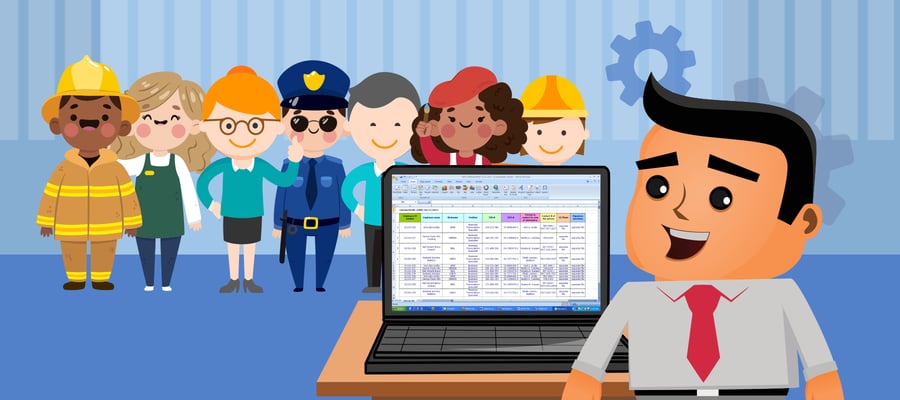
Sometimes a major barrier to effective research is gathering a large enough pool of qualified respondents to a study. A research facilitation service can streamline this process, helping to vet participants for fit. They can also confirm that prospective participants have the technology necessary to complete the study, such as Internet access or the proper browser configurations. Facilitation services can provide researchers with a respondent disposition report outlining who was contacted and the degree to which each person is or is not qualified. These Excel reports help researchers evaluate which criteria they want to prioritize and what sample size would work best for their studies.
Once respondents are selected, a facilitation service should be able to assist with any aspect of respondent management. Services can schedule interviews and focus groups and provide any necessary instructions or materials that respondents might need in advance. This could include sending product samples for testing, providing webcams for online interviews, distributing conferencing numbers and host pins for a chat-only focus group, or whatever a researcher requires to conduct the study.
A facilitation service can also manage respondents’ incentive payment processing by tracking and ensuring payments are sent to respondents. If researchers are unsure how to best incentivize participants, a service can suggest amounts and types of incentives for a given study.
Project management

Researchers can simplify the process of conducting research even further by using a facilitation service to assist with supervising and managing their projects. Excel or PDF reports can keep researchers up-to-date with project details, such as expected number of respondents, projected cost of a project, and its timeline. These types of market research project trackers can help keep researchers organized and focused as they navigate multiple projects at once.
A tech check tracker offers researchers more detailed information about the technical logistics of a particular project. They can view an Excel or PDF report that outlines how many respondents have already been interviewed, how many are confirmed as ready for an interview, which respondents have only been reached by voicemail and are not confirmed, which respondents were no-shows at interviews, and additional project tracking information.
Webcam IDIs and focus groups

Synchronous, or real time, in-depth interviews (IDIs) and focus groups conducted via a web room are often more affordable and convenient alternatives to meeting respondents in-person. At the same time, the researcher does not lose the advantages of having a visual connection with respondents. In contrast to phone interviews or chat-only conferencing, researchers are able to develop greater rapport with respondents and can observe more subtle nonverbal reactions to questions. Respondents can simultaneously view the moderator, each other, and any stimuli being used via webcam and a web room.
A marketing research facilitation service should be able to orchestrate every aspect of webcam IDIs and focus groups, from technical logistics to respondent and moderator training before a study is done. Moderators can be briefed on how to maximize the capabilities of the web room and conduct a run through to ensure readiness and confidence during research. A facilitation service can ship webcams for interviews to respondents and confirm they are properly installed. Tech checks before the day of the IDI or focus group verify that respondents have the correct flash version, are able to enter web rooms, and that webcams provide a clear view of them. In short, a facilitation service can give researchers much-needed peace of mind regarding both logistics and technique with this format.
Stimuli review and assistance
Marketing researchers often incorporate stimuli into IDIs or focus groups to increase engagement and expand their opportunities for discovering a new insight. This could be visual or auditory content such as advertisements, product packaging, or video. In other cases stimuli may be task-related, such as sorting products into groups, giving ratings, drawing sample designs, or conducting website usability test.
Research facilitation services can help marketing researchers use stimuli effectively on the day of an IDI or focus group. They can help convert researchers’ given stimuli into a usable format as well as offer suggestions about how to improve upon it. A service can assist with randomization, zooming in, and layering stimuli during research as well as analyzing results from the stimuli afterwards.
Multi-language capability and facility observation
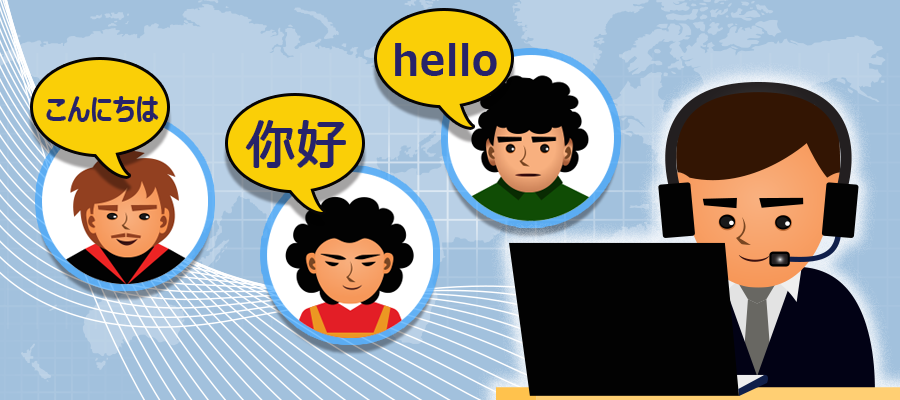
Companies are increasingly looking to expand their presence internationally to diversify and grow their markets. Because companies are now frequently marketing products and services to consumers worldwide, respondents in market research studies do not always share the same language as researchers. This growing trend of international expansion has made market research translations increasingly important.
Market researchers conducting studies for international markets should look for facilitation services that can offer multi-language capabilities at every stage of the process. Prior to contacting respondents, a service can help translate the screener for interviews or the discussion guide for focus groups into multiple languages. During research, a researcher can hear respondents being interviewed in their local language in real time while simultaneously listening along in his or her own language. Transcriptions of these IDIs or focus groups can subsequently be translated for later use.
Services that provide facility observation capabilities allow researchers to explore numerous options. For instance, a traditional focus group could be conducted in one country while it is transmitted live to remote viewers in another country or multiple different locations. In another case, a respondent and moderator could be in two different countries while researchers and clients observe from other locations. Multi-language capabilities and facility observation give researchers a great deal of freedom to tailor their studies to meet the demands of global markets.
Website and mobile app usability
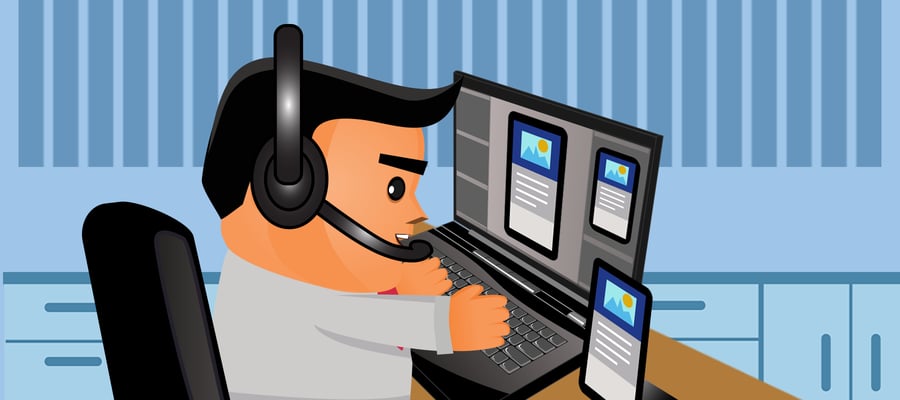
Mobile technology has been rapidly embraced by consumers worldwide and the trend of spending increasing amounts of time on mobile devices is only expected to grow. Exponential growth in mobile has led to parallel growth in mobile usability studies or mobile UX. It has become vital for marketing researchers to understand how consumers are selecting and navigating websites and apps, particularly from their mobile devices.
A good market research facilitation service will offer a variety of methods for conducting usability tests, both synchronous (real time) and asynchronous. For instance, IDIs and focus groups can incorporate mobile UX in real time. Researchers and moderators can observe both their respondents and their respondents’ mobile screens live as people navigate a website or app.
Alternatively, researchers can have respondents participate in a mobile activity before an IDI or focus group. Marketing research mobile apps can assist researchers with gathering data about shopping experiences or patient journeys. Respondents can submit audio diaries via a mobile research app as they catalog their experiences. This tool gives researchers greater flexibility with offline capabilities and a variety of activity options.
Editing and analysis services
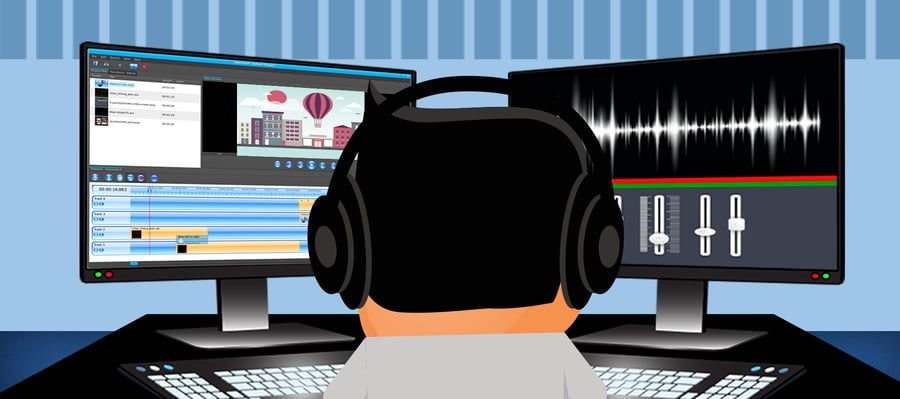
Research facilitation services can also deliver valuable assistance as researchers refine their data and begin to analyze it. For instance, streaming media files allow researchers to replay footage of their interviews or focus groups. This type of recording captures everything from the moderator’s perspective, including audio and visual of themselves, each participant, and any stimuli used. Streaming media files are particularly useful for analyzing usability studies. A researcher can replay how each respondent navigated the client’s website and/or app and make more direct comparisons after interviews are completed.
Streaming media files can be further refined by a facilitation service depending on what researchers need. They can create highlight reels or clipable audio and video recordings that are more easily referenced, shared with colleagues, and embedded into reports or presentations for clients. Researchers may choose to clip files themselves or save time by having a service do this for them.
As researchers analyze their data, they can use word clouds to visualize key words or responses that dominated a study. The larger a word or phrase is depicted in a visual cloud of words, the more frequently that word was used in participants’ responses. A facilitation service can use transcripts of interviews or audio diaries, responses to an online bulletin board, surveys or other text responses to create a word cloud.
Transcriptions

Streaming media files and clipable recordings are important for analysis and presentation, but sometimes researchers can conduct better analysis when the data is in a text format. Market research transcriptions can be generated from many sources including interviews, focus groups, conference calls, audio diaries, seminars, podcasts, or other audiovisual content. Researchers can then use keyword excerpts for further analysis. They can highlight key words of interest and generate reports based on those words. Researchers may choose to tag words or phrases as positive or negative and then analyze their use or frequency. Transcripts can also be given audio tags, linking specific points on the transcript to the audio file for later reference.
Storage services
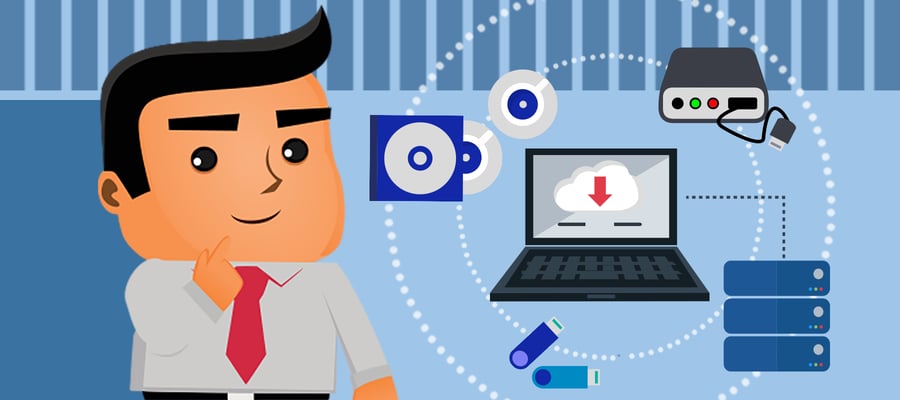
A good research facilitation service will deliver multiple options for storing audio or audiovisual recordings so that researchers can replay, share, or clip them at any time. Researchers can choose to save recordings to CDs, DVDs, hard drives, or to an online platform. Facilitation services should also take the utmost precaution to ensure that researchers’ content is stored securely.
Data Presentation and After-Project Market Research Deliverables
A marketing researcher who has selected probing and perceptive research questions, used excellent methodologies in answering them, and been supported by a research facilitation service is well on his or her way to successfully serving a client. However, this person’s work will effectively be worthless if it is delivered in a lengthy and densely-worded slideshow or a written report that is hundreds of pages long. When market researchers deliver their findings in such a way, insights are ultimately ignored by clients and researchers’ work has no measurable impact.
To continue the earlier analogy, data is like the fuel and research and analysis is like the combustion engine, but end clients are not well-served unless researchers put the frame of a vehicle around their work. After-project deliverables are what ultimately help transform an end client’s decision-making and foster future success. Following are some ideas for framing research findings that clients can then determine how to get out on the road.
Organizing data for deliverables

Marketing researchers can easily become overwhelmed by the sheer amount of data generated during qualitative research studies, particularly when they are conducting multiple studies at once. One of the reasons excellent market research often produces lackluster deliverables is because researchers have such a large volume of unorganized data. Transcripts, usability studies, audio and video content from IDIs, and other materials are valuable only if they can be easily reviewed, shared, and referenced.
Managing market research deliverables can be streamlined by using a data and media management platform. This serves as a central hub to organize, edit, and store all the media files created during IDIs, focus groups, and mobile usability studies. This tool makes it easier for researchers to both reference and showcase content to clients. Marketing researchers experience many benefits from using a media management platform including the following:
- Organize storage — By uploading all content - video, audio, images, and photos - to one place, researchers can centralize storage. They can create separate project folders for each of their studies and archive them as needed.
- Tag and search for easy retrieval — Researchers can create tags that allow them to search for particular content or keywords. This feature will bring them directly to the audio or video moments they want to reference later or highlight for clients.
- Generate transcripts — Transcripts can be generated automatically with speech-to-text technology and then manually edited, copied, and pasted directly into reports.
- Clip key points — Researchers can clip key audio or video segments and easily export them to highlight the essence of their findings.
- Collaborate and share securely — These platforms allow colleagues to work collaboratively on content while keeping it securely stored. If desired, clients can be given view-only access to multimedia content.
Smartphones now serve as a central hub for most people’s personal lives, containing nearly every capability they might need in a day — contacts and email, calendars, banking and payments, photo and video, music, web browsers, maps and GPS, social media, entertainment, fitness tracking, and any number of other applications. It makes sense for researchers to have a comparable hub to manage their professional work. Given the volume of media content they must generate, navigate, and analyze during just one project, it makes sense for researchers to centralize all their work on a platform where managing it is intuitive and secure.
Core features of effective after-project deliverables
If market researchers want their clients to recall and then apply what they have uncovered, researchers need to devote the same level of rigor to their own deliverables as they demand from facilitation services. After-project market research deliverables should have the following features; they should be:
- Memorable — Clients should be able to retain and recall the information that is presented to them in reports just as easily as they can recall a story.
- Organized and understandable — Findings should be presented in a way that is intuitive and does not require great effort to understand. Reports should not overwhelm clients but rather make key takeaways explicit.
- Relevant and concise — Deliverables should be structured to reflect the end client’s objectives for conducting the research. Clients do not necessarily need to be aware of every question a researcher asked or read a researcher’s findings chronologically. Instead, an executive summary of findings should be capable of standing alone. Clients can reference the supporting details and evidence that shed further light on those findings as needed.
- Varied — Researchers can improve retention and understanding with repetition by using varied forms of delivery to emphasize a point. The more varied the presentation of findings — graphs, charts, audio clips, video clips, word clouds, stories, analogies — the more likely clients are to act on them.
In short, after-project deliverables need to be engaging but also clear and actionable. A researcher’s degree of success is ultimately measured by whether or not clients use the information he or she delivers.
Format options for deliverables
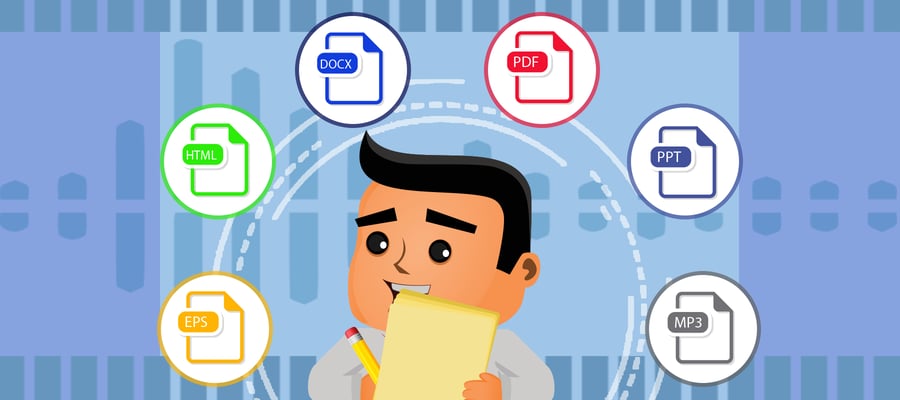
Clients may have specific requests for how they want research findings delivered or they may leave that decision up to the discretion of researchers. Following are some ideas for bringing research findings to life for clients:
- Multimedia presentations — Traditional slideshow presentations don’t have to be dull if they are well constructed. Researchers can connect to their clients on both an emotional and strategic level by presenting findings through engaging video clips, images, graphics, charts, quotes, and research anecdotes.
When content is varied but all connects to a larger narrative, multimedia presentations can surprise and inform clients. - Reports — Similarly, clients’ eyes do not need to glaze over when presented with a written report. Reports should also be narrative-driven and rich in visual content. They must find a balance between findings and implications, between what and so what?
- Posters or one-pagers — Research findings that are distilled onto a single page or poster often have more lasting impact for clients who can easily hang them up and repeatedly reference them. A single infographic or one-page synopsis that captures the essence of the research findings highlights clients’ opportunities to them over and over again.
- Mini documentaries —Research that is strongly ethnography-based, or highly focused on people’s day-to-day behaviors, may be more striking when presented in a short video documentary format that follows several respondents’ stories or journeys.
Regardless of the chosen format, researchers should keep the core features of deliverables top-of-mind when presenting their findings — memorable, organized, understandable, concise, relevant, and varied. This will pave the way for their clients’ future success.



